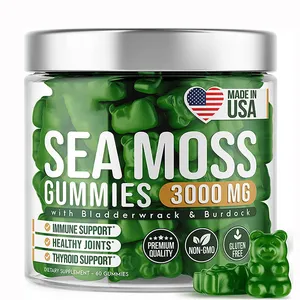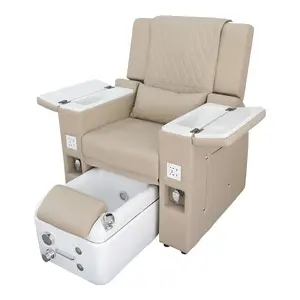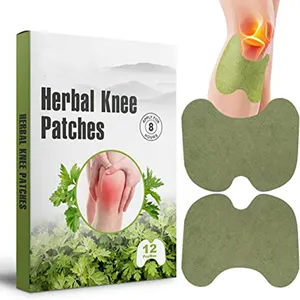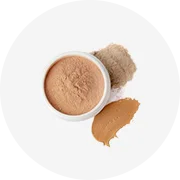Phổ biến trong ngành của bạn

2.5-7.5mm Nước ngọt pealrl nút hạt ngọc trai giá bán buôn nửa khoan ngọc trai nước ngọt nút nửa lỗ ngọc trai
0,17 US$ - 0,25 US$
Đơn hàng tối thiểu: 100 Cái
Vận chuyển mỗi chiếc: 1,24 US$


2-13mm tự nhiên nước ngọt ngọc trai vòng cổ Loose pearl trắng hồng tím vòng tự nhiên bé akoya Chuỗi Ngọc Trai đối với trang sức làm
0,20 US$ - 28,00 US$
Đơn hàng tối thiểu: 5 Cái
Vận chuyển mỗi chiếc: 5,18 US$


100% Thảo Dược Âm Đạo Sạch Detox Ngọc Trai Yoni Thắt Chặt Detox Ngọc Trai Làm Sạch Băng Vệ Sinh Yoni Ngọc Trai
Sẵn sàng vận chuyển
0,22 US$ - 0,35 US$
Đơn hàng tối thiểu: 100 Cái
Vận chuyển mỗi chiếc: 0,39 US$


1.3Kg Viên Thạch Trà Bong Bóng Thành Phần Bùng Nổ Nước Ép Quả Việt Quất Boba Ngọc Trai Popping Boba
2,29 US$ - 2,39 US$
Đơn hàng tối thiểu: 120 Hộp


3Kg Viên Thạch Trà Bong Bóng Thành Phần Nước Ép Dâu Tây Boba Ngọc Trai Đài Loan Popping Boba
4,99 US$ - 5,25 US$
Đơn hàng tối thiểu: 60 Hộp


Đài loan chất lượng cao mềm đồ uống 50 gam ngay lập tức khoai mì ngọc trai
0,46 US$
Đơn hàng tối thiểu: 4800 Gói


25g * 300 túi/Carton Nhỏ ngay lập tức đóng gói riêng bột sắn ngọc trai cho trà sữa Bong Bóng Tự làm
31,90 US$ - 36,90 US$
Đơn hàng tối thiểu: 10 Hộp các tông

Nước ép trái cây bóng bùng nổ BOBA ngọc trai cho trà bong bóng mềm đồ uống
40,00 US$ - 45,00 US$
Đơn hàng tối thiểu: 120 Hộp các tông

Nhà Cung Cấp Nguyên Liệu Trà Sữa Trân Châu Đường Nâu Okinawa Tốt
100,00 US$ - 170,00 US$
Đơn hàng tối thiểu: 1 Hộp các tông

Ngón tay cái thành phần trà bong bóng nước hạt dẻ popping BOBA 1kg sử dụng cho trà bong bóng
3,30 US$
Đơn hàng tối thiểu: 100 Túi
Vận chuyển mỗi chiếc: 2,88 US$

Các tìm kiếm liên quan:
ngọc trai nước bán buônngọc trai nước đầy màu sắcngọc trai nước trắngngọc trai nước xanhngọc trai nước quảng châungọc trai nước sinh tháingọc trai nước ngọt bán buônngọc trai nước hồngngọc trai nướcngọc trai nước ngọt bán buônngọc trai nước ngọt giángọc trai nước cho hoangọc trai nước hoa hồngngọc trai nước ngọt trònngọc trai nước ngọt 9mm

Baroque ngọc trai hạt Trần các nhà sản xuất có thể chọn đồ trang sức nước ngọt Màu đá Trần 19mmx25mm
Sẵn sàng vận chuyển
45,00 US$
Đơn hàng tối thiểu: 2 Cái
Vận chuyển mỗi chiếc: 4,11 US$


Đài Loan nước giải khát không đông lạnh 75g ngay lập tức khoai môn tapioka ngọc trai
0,70 US$
Đơn hàng tối thiểu: 4800 Gói

Trà Sữa CASA Pearl Đường Nâu Bột Trà Sữa Tức Thì Cho Thành Phần Trà Bong Bóng Đài Loan
100,00 US$ - 170,00 US$
Đơn hàng tối thiểu: 1 Hộp các tông

7-8mm cứng Gel hạt pha lê bom với nước cứng bong bóng mềm đàn hồi Gel Hạt Nước bong bóng đạn pha lê đất

4,30 US$ - 5,50 US$
Đơn hàng tối thiểu: 100 Kilogram
Vận chuyển mỗi chiếc: 182,36 US$

16Mm Vòng Rhinestone Bubblegum Acrylic Đường Hạt Thẳng Lỗ Khoan Nước Bông Tuyết Vá Mềm Đường Chunky Đính Cườm
0,55 US$ - 0,69 US$
Đơn hàng tối thiểu: 30 Cái

Tùy Chỉnh Màu Đá Xương Đòn Chuỗi Trang Sức Thanh Lịch Gạo Hạt Vòng Cổ Đầy Màu Sắc Mềm Clay Cổ Trang Trí Thời Trang Cô Gái Vòng Cổ
2,00 US$ - 2,30 US$
Đơn hàng tối thiểu: 10 Cái
Vận chuyển mỗi chiếc: 0,60 US$

Rinntin Gpn09 925 Sterling Bạc Trang Sức Đám Cưới Đảng Vòng Cổ Mềm Trắng Vòng Hình Bầu Dục Ngọc Trai Nước Ngọt Tự Nhiên Chuỗi Khối Sẵn sàng vận chuyển
Sẵn sàng vận chuyển
 Sẵn sàng vận chuyển
Sẵn sàng vận chuyển7,29 US$ - 8,17 US$
Đơn hàng tối thiểu: 15 Cái
Vận chuyển mỗi chiếc: 1,77 US$

Rộng rắn mềm Vòng Cổ Chuỗi bạc vàng trang sức không gỉ nước bằng chứng Chuỗi vòng cổ
Sẵn sàng vận chuyển
2,00 US$
Đơn hàng tối thiểu: 2 Cái
Vận chuyển mỗi chiếc: 1,88 US$

5mm Acrylic ngọc trai trong suốt nước thả hạt DIY Handmade Đính cườm Vòng đeo tay vòng cổ lỏng hạt phụ kiện
0,31 US$ - 0,33 US$
Đơn hàng tối thiểu: 5 Túi
Vận chuyển mỗi chiếc: 1,56 US$

Giày pha lê cho bé gái giày Công Chúa Đế mềm hình nơ ngọc trai Kim Cương nước mới mùa hè 2023
Sẵn sàng vận chuyển
5,84 US$ - 6,15 US$
Đơn hàng tối thiểu: 3 Cái
Vận chuyển mỗi chiếc: 11,97 US$

Mặt Nạ OEM Mặt Nạ Làm Đẹp Chăm Sóc Da Ngọc Trai Làm Trắng Mềm 1000G Mặt Nạ Dạng Bột Nhãn Hiệu Riêng Mặt Nạ Làm Đẹp
4,80 US$ - 5,00 US$
Đơn hàng tối thiểu: 200 Túi

Thiết Kế Mới Nhất Pháp Màu Vàng Vải Tuyn Ren Vải Thêu Ren Lưới Với Ngọc Trai FL2070
5,20 US$ - 5,40 US$
Đơn hàng tối thiểu: 5 Yard

Bán buôn các sản phẩm da với mô hình ngọc trai da bò và mô hình da bò cho ghế ô tô
1,95 US$ - 2,90 US$
Đơn hàng tối thiểu: 1 Mét
Vận chuyển mỗi chiếc: 26,48 US$

Hàn Quốc Flash Bán Tulle Lưới Ngọc Trai 3d Hoa Ren Vải Hạt Cô Dâu
Sẵn sàng vận chuyển
6,53 US$
Đơn hàng tối thiểu: 5 Yard
Vận chuyển mỗi chiếc: 4,56 US$

Nhà Máy Trực Tiếp Tốt Nhất Thực Phẩm Lành Mạnh Nước Trái Cây Chai Thủy Tinh 280Ml Trà Bong Bóng Với Bột Sắn Ngọc Trai Sẵn Sàng Để Uống Bao Bì Trà Uống
0,35 US$ - 0,36 US$
Đơn hàng tối thiểu: 1000 Cái

Khăn Nhung Dệt Trơn Với Ren Đẹp Và Ngọc Trai, Khăn Quà Tặng Chất Lượng Tốt Sang Trọng
Sẵn sàng vận chuyển
3,30 US$ - 3,60 US$
Đơn hàng tối thiểu: 10 Cái
Vận chuyển mỗi chiếc: 3,17 US$


Chất lượng hàng đầu ngay lập tức hương vị tốt mềm Uống Matcha 490ml Rita Matcha bong bóng trà sữa đồ uống và Konjac ngọc trai giá bán buôn

0,40 US$ - 0,43 US$
Đơn hàng tối thiểu: 5000 Cái

Bé Khăn Lau Ướt Giá Rẻ Giá 40G 80 Pcs Ngọc Trai Mô Hình Thêm Mềm Nhà Sản Xuất Bán Buôn Giá
0,27 US$ - 0,29 US$
Đơn hàng tối thiểu: 1000 Túi

Siêu mềm & lớn mô hình ngọc trai nước 99.9% hữu cơ làm giàu bé khăn lau ướt cho làn da nhạy cảm
0,35 US$ - 0,38 US$
Đơn hàng tối thiểu: 10000 Túi

Sợi Nhỏ Edgeless Ngọc Trai Dệt Không Có Đầu Mềm Rửa Xe Làm Sạch Ngọc Trai Xe Đánh Bóng Khăn
0,59 US$ - 0,69 US$
Đơn hàng tối thiểu: 200 Cái
Vận chuyển mỗi chiếc: 0,65 US$
- 10%

15 Mét In Vòng Silicone Hạt Ngọc Trai DIY Cảm Giác Mọc Răng Vòng Cổ Trang Sức Bé Teethers Bracelet
Sẵn sàng vận chuyển
0,11 US$ - 0,13 US$
Đơn hàng tối thiểu: 200 Cái
Vận chuyển mỗi chiếc: 0,11 US$

Rắn màu ngọc trai của phụ nữ hẹn hò túi xách, ngọc trai đính cườm túi bữa ăn tối, bóng bên túi da mềm

5,45 US$ - 12,35 US$
Đơn hàng tối thiểu: 100 Cái
Vận chuyển mỗi chiếc: 5,41 US$

Giấc Mơ vải tuyn Organza sợi vải váy cưới ngọc trai lấp lánh với ánh sáng nước trong suốt
1,21 US$ - 1,58 US$
Đơn hàng tối thiểu: 1000 Mét
Vận chuyển mỗi chiếc: 126,15 US$

Pu Pvc Nappa Da, Hồ Xanh Ngọc Trai Napa Nổi Faux Da, Vải Da Co Giãn
Sẵn sàng vận chuyển
1,40 US$ - 1,80 US$
Đơn hàng tối thiểu: 1000 Yard
Vận chuyển mỗi chiếc: 0,02 US$

Nhãn Hiệu Riêng 330Ml Có Thể Bong Bóng Sữa Boba Trà Đồ Uống Và Toppings Ngọc Trai Màu Đen Từ Việt Nam-Miễn Phí Mẫu Miễn Phí Thiết Kế
0,23 US$ - 0,26 US$
Đơn hàng tối thiểu: 1 Cái

100% Polyester Vải đám cưới sang trọng Bridal ngọc trai cao cấp thêu đính cườm Tulle Ngọc Trai Lưới Ren Vải
Sẵn sàng vận chuyển
3,50 US$ - 5,00 US$
Đơn hàng tối thiểu: 5 Yard
Vận chuyển mỗi chiếc: 18,66 US$
Các danh mục hàng đầu
Giới thiệu về ngọc trai nước mềm
Ngày nay, ngọc trai nước mềm không còn là điều mới mẻ đối với những người bình thường và không còn bị coi là điều cấm kỵ khi sử dụng. Nếu bạn đang tìm kiếm niềm vui áp chót đó, bạn phải kiểm tra sự bao la. Bộ sưu tập ngọc trai nước mềm tại Alibaba.com. Những gợi cảm và cong. ngọc trai nước mềm đáng giá từng xu và chắc chắn làm cho đêm đó trở nên đặc biệt đối với bạn. Những con búp bê này có ngoại hình giống như thật, bắt đầu từ tóc đến ngón chân theo mọi nghĩa.
Cho dù bạn là một người cô đơn đang tìm kiếm một người bạn đời như cuộc sống hay một cặp vợ chồng muốn thêm gia vị cho cuộc sống của họ, bạn đều có thể sử dụng chúng . ngọc trai nước mềm để đốt cháy ngọn lửa đó. Những ngoạn mục. ngọc trai nước mềm có thể tùy chỉnh theo mong đợi của bạn. Những điều tuyệt vời. ngọc trai nước mềm có sẵn ở cả phiên bản dành cho nam và nữ và được làm từ silicone cấp y tế để sử dụng an toàn. Hãy sở hữu ngay bây giờ và tận hưởng một đêm đam mê và cháy bỏng.
Alibaba.com cung cấp những điều tuyệt vời này. ngọc trai nước mềm ở mọi hình dạng cơ thể, kích thước và sắc tộc. Dù yêu cầu của bạn đối với. ngọc trai nước mềm, bạn có thể tải tất cả chúng trên trang web. Những cái này. ngọc trai nước mềm được tạo hình bởi những người thợ thủ công giỏi nhất và mọi chi tiết phức tạp đều được kiểm tra kỹ lưỡng. Những con búp bê này có mắt, tóc, móng tay và tất cả các bộ phận cơ thể khác tương tự như người thật.
Alibaba.com cung cấp nhiều loại. ngọc trai nước mềm có thể giúp bạn mua các sản phẩm phù hợp với ngân sách và các yêu cầu khác của bạn. Các sản phẩm này an toàn để sử dụng, được chứng nhận và thân thiện với môi trường trong tự nhiên. Đơn đặt hàng OEM có sẵn trên các sản phẩm này.
Cho dù bạn là một người cô đơn đang tìm kiếm một người bạn đời như cuộc sống hay một cặp vợ chồng muốn thêm gia vị cho cuộc sống của họ, bạn đều có thể sử dụng chúng . ngọc trai nước mềm để đốt cháy ngọn lửa đó. Những ngoạn mục. ngọc trai nước mềm có thể tùy chỉnh theo mong đợi của bạn. Những điều tuyệt vời. ngọc trai nước mềm có sẵn ở cả phiên bản dành cho nam và nữ và được làm từ silicone cấp y tế để sử dụng an toàn. Hãy sở hữu ngay bây giờ và tận hưởng một đêm đam mê và cháy bỏng.
Alibaba.com cung cấp những điều tuyệt vời này. ngọc trai nước mềm ở mọi hình dạng cơ thể, kích thước và sắc tộc. Dù yêu cầu của bạn đối với. ngọc trai nước mềm, bạn có thể tải tất cả chúng trên trang web. Những cái này. ngọc trai nước mềm được tạo hình bởi những người thợ thủ công giỏi nhất và mọi chi tiết phức tạp đều được kiểm tra kỹ lưỡng. Những con búp bê này có mắt, tóc, móng tay và tất cả các bộ phận cơ thể khác tương tự như người thật.
Alibaba.com cung cấp nhiều loại. ngọc trai nước mềm có thể giúp bạn mua các sản phẩm phù hợp với ngân sách và các yêu cầu khác của bạn. Các sản phẩm này an toàn để sử dụng, được chứng nhận và thân thiện với môi trường trong tự nhiên. Đơn đặt hàng OEM có sẵn trên các sản phẩm này.











